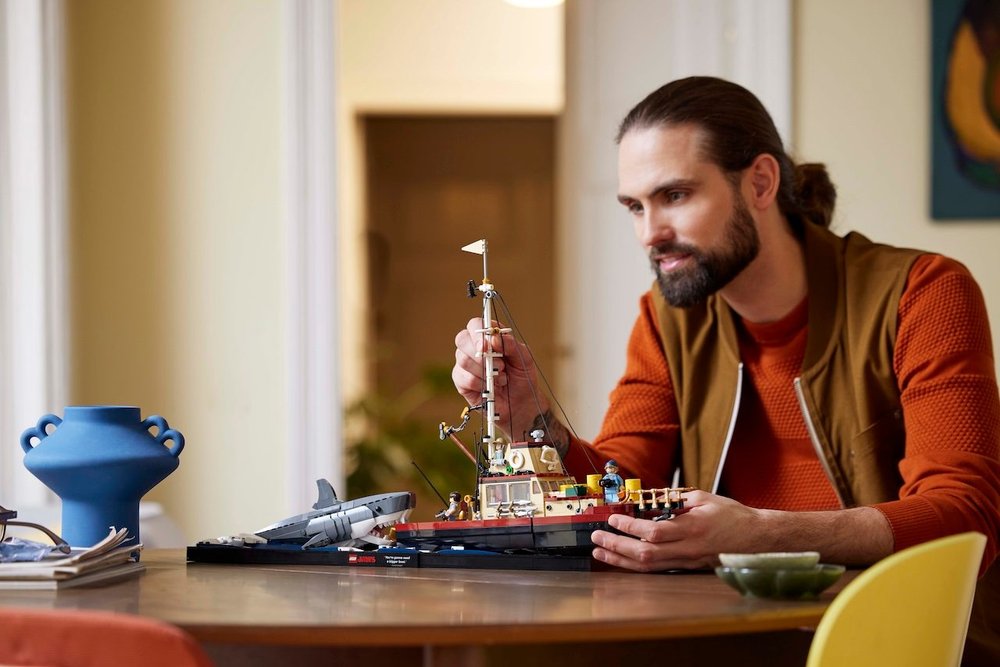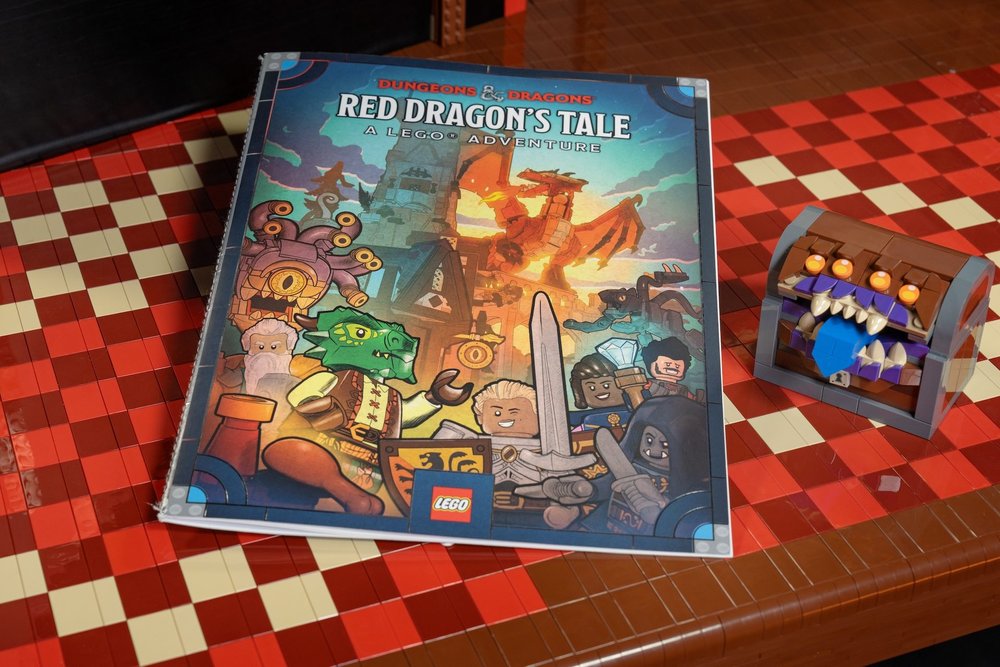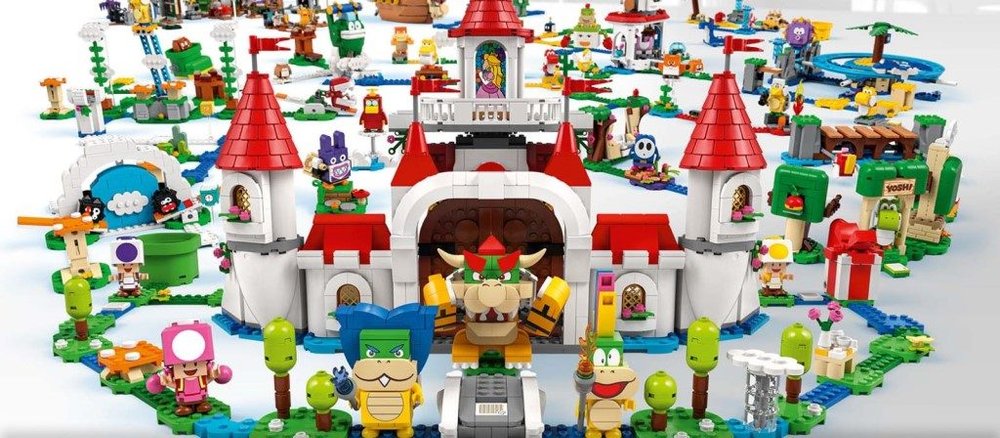‘Lego has mastered risk-taking’ /
The Lego Group global chief product and marketing officer, Julia Goldin, on the place of AI in play and battling complacency at the world’s largest toy company
Sunil Bajaj
/
In March this year, Lego reported 2023 revenue was 2% higher compared to the previous year, growing to DKK65.9bn (around $9.65bn) – not too shabby given the wider toy sector’s struggles with inflation putting pressure on demand and sales.
A key player in the iconic toy company’s ongoing success is Julia Goldin, global chief product and marketing officer since January 2015. Responsible for ‘leading and inspiring the creation of Lego play experiences’, Goldin heads the team responsible for developing the product portfolio and experience, along with marketing and brand building. Prior to The Lego Group, her illustrious career includes a four-year stint as global chief marketing officer at Revlon, and 13 years at the Coca-Cola Company, where she held several senior global and regional marketing roles.
With Goldin just six months away from her 10-year anniversary at Lego, Contagious caught up with the acclaimed CMO to ask about the role of AI in play, the boom of gaming entertainment in popular culture, why an in-house agency model works so well for the organisation and her top tips for how market-leading brands can avoid complacency.
What do you think play will look like in five to 10 years? How is Lego building towards that future?
I think the characteristics of play will be the same as they are today. Kids will still want to have fun, be immersed, engaged and want to connect with their friends. But where I think we’ll see a difference in how kids play is in the merging of the digital and physical spaces, which we are already seeing today, where they’re connecting in a very meaningful way online – even if it is remote.
For Lego as a brand, we have a unique opportunity to span both physical and digital worlds in a way that is unique to us. For example, we recently launched Lego Fortnite, and you’ll notice that all of the bricks’ physics are the same way that you build in real life with Lego. So, you can already see how Lego can create more and more immersive experiences in the digital space. But we’re also not that far away from technologies that will bridge the physical and digital world in a way that’s more connected and seamless than ever before.
Julia Goldin, The Lego Group
Over five years is a period where usually the pendulum swings a bit, kids right now are very used to being together remotely. They love being on Snapchat and seeing all of their friends around the world, and when they get together in person, they sit on different devices playing the same game. They’re just as happy to sit on the chair at home as they are miles away from each other, and I think that’s great. But at some point, I think there will be a craving for a more physical connection. So, I see Lego bridging both of those things.

How do you think AI will change the way we play and how do you see Lego interacting with that new technology?
AI will definitely enable us in different ways than we have ever dreamed of before. We’re all super excited about AI, but AI is still very unproven yet. The technology has just a few different use cases, which are much more geared toward productivity versus true innovation. Our designers will leverage AI as an internal tool to give us a sense of what something might look like, and that’s been very helpful. There’s already a huge number of Lego set ideas generated by AI, but as these ideas only exist in a digital format, we don't know whether they’re possible to build in the real world.
We pride ourselves on our Lego Ideas platform, and the whole purpose of Lego Ideas was to show us something that you can bring to life from the Lego bricks that you’ve created yourself. So, the value of human creativity is still going to be very important, and so much of AI’s potential is going to depend on our creativity and what we can do with the tools available to us. At the end of the day, we need to be thinking about the ways that we surprise and delight our consumers to create a desire for Lego.
If you take our Dungeons & Dragons for example, if you scan the QR code for that set then the digital building instructions tool will know which bricks you have and can serve you different build variations. What I think is missing, and I don’t think AI will solve it, is more real computer recognition. A tool able to recognise 1,000 bricks on the floor or in the bin and then suggest a build. There are these kinds of technologies out there, they just need to be perfected.
Julia Goldin, The Lego Group

Lego has a global community of fans, how do you get the best out of them?
It's a very big focus area for us. First and foremost, it’s not about getting the best out of them but doing the best for them. Having a community that supports your brand is a gift and we need to give back first, so we put a lot of effort into making sure that the Lego fandom is supported in the best possible way. Not only do we listen to them, but also give them the things that they crave – that’s the best way to get the most out of them because they reciprocate with love, user-generated content and engagement in our brand.
About six years ago we bought BrickLink, which is the platform for our most engaged fans who want to build their creations – our sets are way too simple for them and they want to build something very sophisticated. We have invested a lot into optimising that platform to make it better and easier for them to use to develop the tools that they need. But also, one of the things that they wanted was to be able to sell their creations, which we’ve enabled and it’s been very successful.
What’s crucial is delivering on their desires. We just launched Lord of the Rings Tower of Barad-dûr, and it’s on backorder [ie, out of stock] because if you’re a Lord of the Rings fan, that’s the one you want. So, listening to the community and demonstrating that we’ve listened to them is very important – that’s how you build a positive symbiotic relationship with your fans.
How do you sustain the culture of creativity at Lego?
We have over 400 designers at Lego and over 400 creatives in our internal agency. They all love building with Lego, some of them have been doing it since they were very little and are just continuing with their passion. But they need to be inspired for their creativity to flourish, and that’s also a big focus in the organisation.
For example, we have Fabulab Fridays every month where everybody can take a day off to work on whatever they want. A lot of our designers use that time to pull out the pet projects they have under the table and work on those – and that’s wonderful. We also run design boosts, where we do inspirational talks for designers to create an environment for keeping that energy high. By doing all that, we are not necessarily building things that are going to brief today, but that could be ideas of the future.

How do you make sure that you’re fostering a culture of embracing bold and risky ideas in Lego’s marketing?
No matter how much you talk about the evolution of marketing and all the different channels we now have at our disposal, marketers and communication agencies are still so geared towards the 60-second ad. The first idea that comes to the table is always ‘Here's the video,’ or ‘ Now, here’s the storyline.’ I talk a lot about taking inspiration from our entertainment partners when we’re launching a property or a campaign. Let’s not think like an advertiser or as an FMCG type of company, let’s think about it as an entertainment company. How would a studio launch a movie? How would a gaming company launch a game? When they have the opportunity to think that way, that’s what creates the ideas that push the envelope. it’s about setting the vision and inspiring people to think differently.
Secondly, it’s about bringing the right people together around the table and changing the dialogue towards our approach. I encourage people to think differently and not just bring the typical copywriter and artworker together. You instead bring to the table all of the other facets or channels that you can activate in and allow anybody to have a great idea – then build off that great idea. It may be that the idea for launching a product is an event or a life-sized build. Then everything else builds around it.
It’s important to just be very open and constructive with the teams and ask ‘Are these ideas big enough?’ Or ‘Is this something that only the Lego brand can do?’ That’s why when we launched Lego Fortnite we didn’t do an ad, we constructed four life-sized llamas that we put outside our stores and activated in partnership with Epic Games to use the Sphere in Las Vegas.
What are the benefits of having the in-house agency team?
One huge benefit of having an agency in-house is they’re immersed in what we’re doing, and understand our portfolio of products and the DNA of the brand. The head of the agency, Nic Taylor, she has a seat at the table with the rest of my team when we design a portfolio or make big decisions. We can have a lot of great discussions at a leadership level and it takes out a lot of the churn that might happen in a typical agency-client relationship. The first thing is that the in-house agency team are incentivised in the same way that the product teams are incentivised – by the success of our product, not by the money that they get from their clients. The second is that the budget is within our control, we can decide where we want to invest more or less, and where we should take more risks. The third is the ability to have the right conversations all the time in an open, transparent and safe environment – where we can discuss risky ideas and debate them around the table.
The inspirational bit is important too and that’s why we encourage the agency to sometimes work with external partners. Sometimes we combine internal and external teams and have them work together within a semi-pitch. It’s a way to ensure that we're not getting complacent and too internally oriented.
Julia Goldin, The Lego Group
In many ways, Lego was the pioneer in making hit adaptations of entertainment properties – but how is the brand planning for the next mass gaming frenzy?
A lot of the physical toys and games are coming to the big screen, but taking toys and games that have only existed in a virtual world and making them physically relevant – that’s something Lego has been doing now for a few years.
We’ve had very successful launches of Lego Super Mario and Lego Minecraft, last year we launched Sonic and more recently Animal Crossing, which has been extremely well received. Lego Fortnite is also coming in its physical form, and judging by the excitement for that, I think there’s more opportunity in that space for Lego to tap into and capture those trends.

The Lego Group sits comfortably as the biggest toy company in the world. How do you make sure that complacency doesn’t set in?
It’s down to a personal mantra and leadership style of mine – I like to call myself ‘humbly paranoid’. I’ve learnt from everything that I’ve ever done that requires mastery – whether that’s playing the piano or running – if you get complacent, you start losing your strength, impact and sharpness in your ability. So, being humbly paranoid is very important, especially with innovation and creativity at Lego.
Even when Lego are at the top of our game, there are two core things we’re doing as an organisation to avoid complacency. Firstly, we always start on the premise that what worked yesterday might not necessarily work today. Not to throw the baby out with the bath water, so we keep what’s working, but always continuously updating it. It’s because our audiences are changing, and their expectations are getting higher and higher.
Secondly, we always have to remind ourselves that Lego are not there to serve needs – a child doesn’t need another toy, they have to want it, and adults for sure don’t need Lego bricks, but they want it. So you have to create something that’s going to be highly desirable, which takes a lot of art, not just science. These are things that are top of mind every year when we get into a new cycle of innovation.
Julia Goldin, The Lego Group

What advice would you give to market-leading brands erring on the side of playing it safe?
Risk-taking goes hand in hand with innovation. It’s an interesting parallel that I want to draw here between product and marketing innovation. So, when it comes to product innovation, Lego has mastered risk-taking. We have to plan our portfolio two years in advance and we launch about 400 products, not every single one has to work, but the majority of them have to work pretty well – therefore our ability to take risks in that sort of setting is not that high. But to unlock our ability to take risks with products, we do a couple of things.
One is our Creative Play Lab, which is a group within my team that is particularly focused on innovation that’s much further out, we’re talking five-plus years. We’ve given them that long time horizon so they can experiment like scientists and fail as many times as they need to in finding the right way to do something – which avoids us putting a gun to our heads to decide yes or no.
The second thing is that to be able to take risks, we have a logic to our portfolio, knowing for sure that certain things are going to work, then others that we want to try out. Flower Bouquet is the perfect example, and it turned out to be a massive success. Similarly, we tried out a few other things that didn’t work so well, but it’s about allowing ourselves to do those things.
But when it comes to marketing campaigns, unfortunately, it doesn’t work that way. The way that it works is much more short-term, you have a brief you need to deliver on, it has to work, and then we get stuck in being safe. I’m very curious about how to unlock the potential for creativity in marketing, and I think it’s not dissimilar from what I talked about with products. You have to give yourself time, take some risks and be prepared to fail. Don’t bet the house, but if you want to do something really different then start a bit earlier and give yourself more time for testing.
I think complacency has stepped into the marketing and creative industry. At what point have we forgotten that advertising is a creative discipline and we’re not here to just push out concrete rational messages? It’s very easy to just churn out things that work, but if we truly believe it’s a craft, if we truly believe it’s about creativity, then we need to challenge ourselves and up the ante. Otherwise, I can see a world where AI is going to churn out all the same functional ads, but is it going to engage? Is it going to capture people’s imagination? And will people opt-in to watch it?

The average tenure of CMOs is getting shorter and shorter – what is your secret for such a long and prosperous time in your Lego role?
There’s a mindset at a lot of organisations to be very short-term oriented, especially companies that are in the public eye – so, sometimes they then make very swift decisions based on what happens in a given year or a given month. I first came to The Lego Group in 2014, our performance in 2015 was okay, in 2016 our growth was very low and then in 2017 it was flat – so we slowed down.
But there was a desire and focus to build for the future, therefore investment was in our portfolio, the Lego brand and the future of innovation to make sure that we could get out of that slump – instead of being more short-term and pivoting towards something completely different. The Lego Group has evolved the mindset and mentality that we have to plan for the longer term, and that mindset helps avoid these fast moves which happen in many organisations – which is part of why CMOs become replaced to make a swift change.
You have to be a very good leader, by which I mean you have to be a good leader within the organisation that you’re in. You have to lead your team in a way that they support you and you build followership. Otherwise, you can’t deliver all of the great things you might envision. It’s about collaborating well with operations and marketing as well as you do with finance and digital. It’s functional, but it’s also leadership. Those are the two things I would say are critical for a CMO to thrive.
Want more of the same? /
We don’t just write about best-in-class campaigns, interviews and trends. Our Members also receive access to briefings, online training, webinars, live events and much more.







